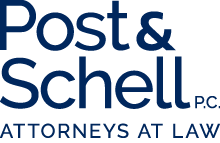

OSHA's Updated Walkaround Rule Takes Effect May 31, 2024

OSHA’s new Worker Walkaround Designation Process Rule, which goes into effect at the end of this month, opens the door for union organizers, labor activists, and interest groups to access company worksites. The Rule also creates new challenges for companies seeking to protect trade secrets and proprietary information from competitors and public disclosure, and increases the possibility of OSHA citations and penalties resulting from inspections. Businesses in industries at high risk for OSHA enforcement and union organizing activity, including the construction, manufacturing, warehousing, and wholesale trade industries, should prepare for the Rule’s implementation.
You can read more about the new Rule, and our recommendations for implementation by clicking here.
Disclaimer: This article does not offer specific legal advice, nor does it create an attorney-client relationship. You should not reach any legal conclusions based on the information contained in this article without first seeking the advice of counsel.


